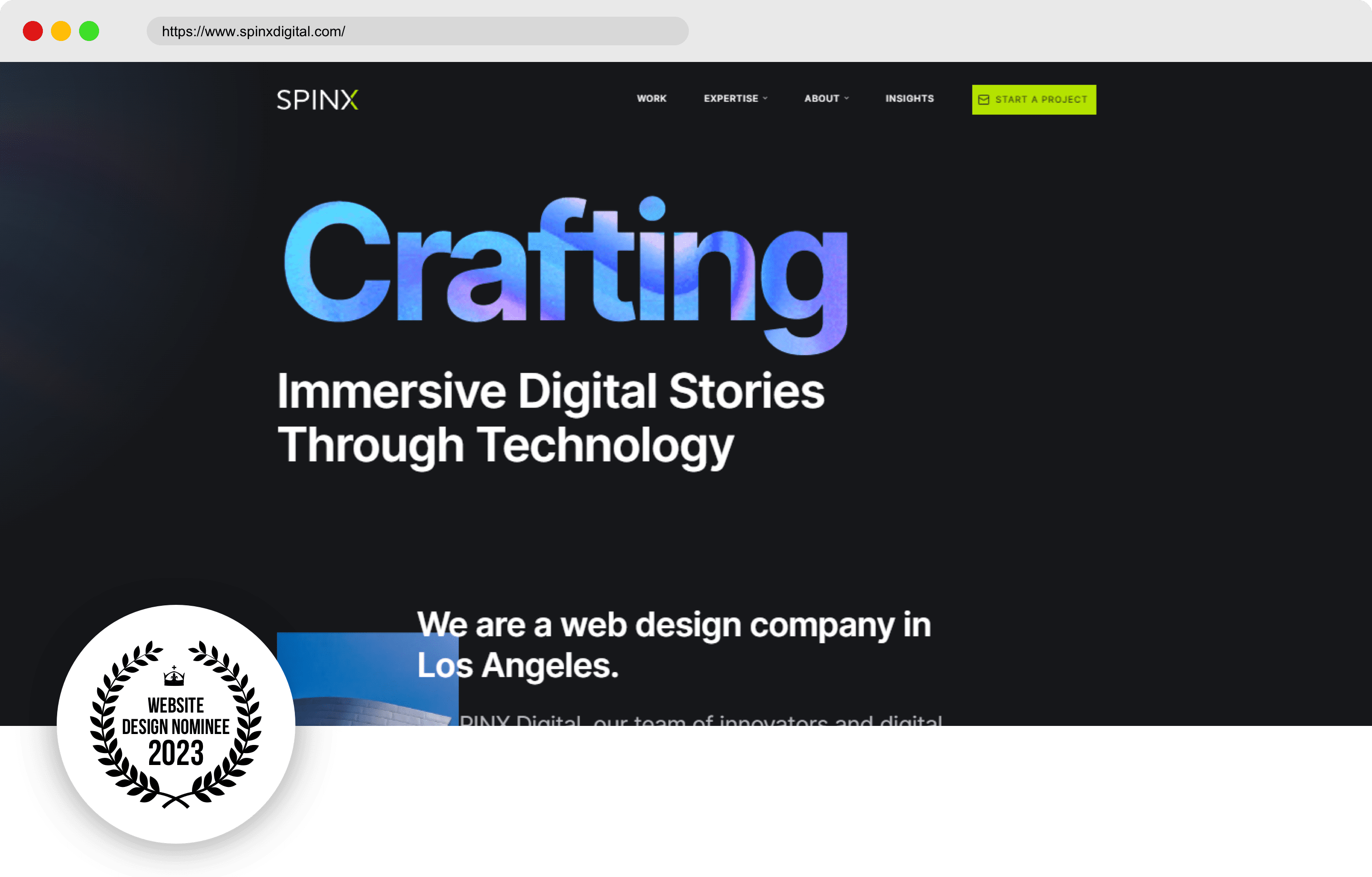Exploring the Connection Between Website Design and SEO Performance
Exploring the Connection Between Website Design and SEO Performance
Blog Article
The Ultimate Guide to Modern Web Site Design Trends
In the ever-evolving electronic landscape, modern-day site design fads play a vital role fit individual experience and engagement. From the increase of minimal design concepts that prioritize simplicity to the impact of bold typography in specifying brand identification, each aspect adds to a natural on the internet existence. The emphasis on mobile-first and responsive techniques, alongside innovative microinteractions, even more enhances functionality. The growing emphasis on sustainable web style practices reflects a commitment to ecological duty. These patterns collectively elevate essential questions regarding the future of reliable website design and what it indicates for customers and companies alike.
Minimalist Style Principles
Minimal design principles stress the idea that much less is more, advocating for simpleness and functionality in visual communication. This technique remove unnecessary components, concentrating rather on important components that share the intended message efficiently. By prioritizing clearness, minimal layout boosts user experience, enabling site visitors to browse internet sites easily.
Core tenets of minimalist style include using enough white room, which develops a feeling of equilibrium and organization. This adverse area not only directs the audience's focus to key components yet also promotes a soothing visual atmosphere. Furthermore, a restricted shade palette is commonly utilized, utilizing single plans or soft shades to keep aesthetic cohesion and stop frustrating the individual.
Typography plays a critical function in minimal design, where legible font styles are picked for their simpleness and efficiency in connecting material. Inevitably, minimalist style principles cultivate a concentrated setting that urges customers to engage with the material, boosting the overall efficiency of modern-day website layout.
Bold Typography Choices
Welcoming vibrant typography options has actually become a defining attribute of modern website style, as it effectively catches interest and shares strong messaging. Designers are progressively utilizing typography not simply as a functional element yet as a crucial visual element that boosts the general visual and customer experience.

Moreover, the association of bold typography with minimalist design principles permits for striking contrasts, improving readability while preserving visual appeal. The usage of whitespace around strong message better highlights its value, making sure that the message reverberates with the target market.
As electronic landscapes become extra competitive, leveraging strong typography enables brand names to distinguish themselves and leave a long-term impact. The careful option of typefaces and their application can stimulate feelings, develop tone, and drive action, making vibrant typography an essential tool in modern-day web site layout. Ultimately, it is a powerful method to boost narration and guarantee that vital messages are not just seen however likewise really felt.
Responsive and Mobile-first Style
Responsive and mobile-first style has actually become an essential concept in modern web site advancement, reflecting the enhancing dependence on mobile phones for accessing on the internet material. As individual habits shifts in the direction of mobile browsing, designers should prioritize producing experiences that adapt seamlessly across different screen dimensions and resolutions.
A receptive style guarantees that a website immediately readjusts its design, photos, and capability based on the gadget being utilized. This technique improves customer experience by supplying consistent navigating and readability, regardless of whether the site visitor is on a tablet, smartphone, or desktop computer computer system. Moreover, mobile-first style supporters for establishing internet sites at first for smaller sized displays, you could try these out consequently scaling approximately bigger displays. This approach motivates an extra streamlined and efficient design process, focusing on crucial material and performance initially.
Implementing mobile-first and receptive principles not just deals with customer preferences but likewise aligns with seo (SEARCH ENGINE OPTIMIZATION) techniques. Significant online search engine, like Google, prioritize mobile-friendly websites in their positions, making it critical for organizations to embrace these layout techniques. In a competitive electronic landscape, embracing responsive and mobile-first design is not simply an option; it is essential for guaranteeing access and engagement with a diverse audience.
Involving Microinteractions
Microinteractions play a critical duty in improving customer interaction and general website experience, especially in the context of mobile-first and receptive layout. These subtle layout aspects supply instant responses to individuals, making interactions a lot more pleasurable and user-friendly. Instances include button animations, notification alerts, and packing indicators, which not just overview users however likewise produce a sense of connection with the user interface.
Incorporating appealing microinteractions can significantly improve usability by decreasing cognitive lots. When customers obtain aesthetic or auditory responses upon performing actions, such as clicking discover here a switch or submitting a type, they really feel a lot more positive in their options. This cultivates a smoother navigation experience, inevitably boosting customer retention.

As website layout trends remain to evolve, the significance of microinteractions can not be overemphasized. They act as the subtle yet effective touchpoints that transform regular communications into remarkable experiences, thus elevating the overall effectiveness of modern web layout.
Sustainable Web Design Practices
Sustainable website design methods are coming to be progressively important as the electronic landscape grows and ecological issues increase. Programmers and developers are recognizing their obligation to produce web sites that not just offer customer requirements but likewise lessen environmental effect. This method includes a number of crucial strategies.
First of all, maximizing energy consumption is extremely important. Web sites need to be developed to pack quickly and effectively, which reduces server power use and enhances individual experience. Methods such as picture compression, minimizing HTTP requests, and utilizing contemporary coding methods add significantly to this objective.
Secondly, selecting eco-friendly holding companies is essential - website design. Several holding companies are currently powered by renewable energy sources, allowing sites to run in a much more sustainable fashion. This choice mirrors a commitment to minimizing carbon impacts
Furthermore, adopting a minimalist style can read more enhance sustainability. Less elements on a page bring about much less data transfer, which not just speeds up filling times however likewise preserves resources.
Last but not least, promoting electronic ease of access makes certain that sites get to a larger target market without unnecessary bloat, lining up individual experience with ecological obligation. By incorporating these lasting techniques, web designers can add favorably to both customer involvement and the earth's wellness.
Conclusion
In summary, contemporary web site layout trends emphasize the integration of minimalist principles, bold typography, and responsive style to improve individual experience. Involving microinteractions add to unforgettable communications, while lasting methods promote for ecologically mindful advancement. Collectively, these elements not just raise aesthetic allure yet likewise boost capability, ensuring that sites are both visually striking and easy to use. Taking on these trends is vital for creating impactful electronic experiences that resonate with users in a progressively competitive on-line landscape.
In the ever-evolving digital landscape, modern website design fads play a crucial duty in shaping user experience and engagement. By focusing on quality, minimalist design improves user experience, allowing visitors to navigate web sites easily.
Ultimately, minimalist design principles cultivate a focused atmosphere that urges customers to engage with the content, improving the general efficiency of modern site style.Microinteractions play a critical duty in boosting customer involvement and general website experience, specifically in the context of mobile-first and responsive style.In summary, modern internet site style fads highlight the integration of minimal principles, strong typography, and receptive design to improve user experience.
Report this page